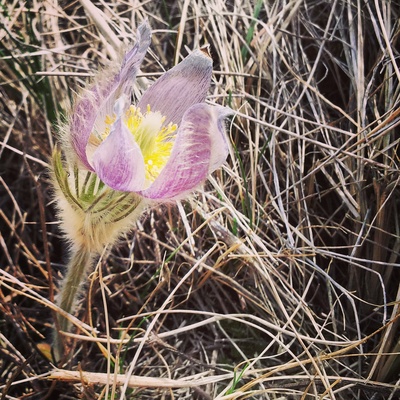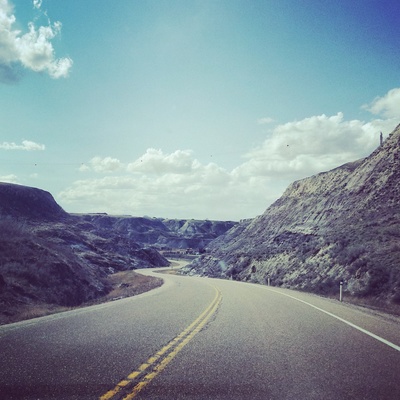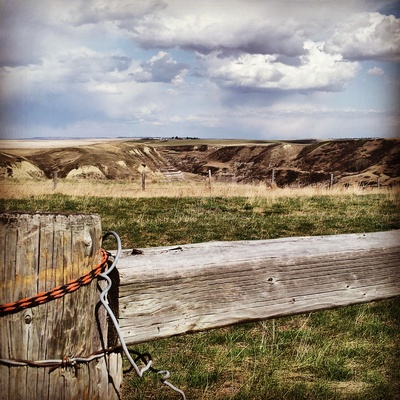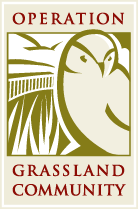News
Experiential Conservation: the case for Alberta’s grasslands
July 2015
From a public perception standpoint, Alberta’s west dominates the place-based agenda. One only has to do a google image search of ‘Travel Alberta’ or ‘Visit Alberta’ to be reminded of the mountainous beauty of this province. According to the image results, it seems that if there are rocks, conifers, mega-fauna and pretty vistas, a place will get all the attention it wants. But what about the attention a region needs? Interestingly enough, an image search of ‘Conserve Alberta’ results in a shift to the prairie landscape. However, Alberta’s grasslands—while certainly advocated for by niche groups—don’t seem to receive the same level of public attention as its mountainous neighbor.
Environmentalist Baba Dioum famously said, “In the end we will conserve only what we love; we will love only what we understand; and we will understand only what we are taught.” Perhaps understanding is lacking regarding the importance of this ecoregion, which in turn limits the sense of broad-scale conservation urgency. For instance, an oft-perceived difference between the mountains and the grasslands is the misconception that the grasslands are not as “wild.” Images of charismatic megafauna such as grizzly bears, bighorn sheep, cougars, and mountain goats top the list of visitors’ expectations when visiting these spaces. While the lucky traveler might catch a glimpse of some of these animals, it’s certainly not guaranteed. My own time in the prairies, on the other hand, has never disappointed in terms of wildlife sightings—northern leopard frog, ferruginous hawk, prairie falcon, golden eagle, pronghorn antelope…and the majority of these were seen when I was NOT on the clock during my wildlife jobs (and doesn’t begin to touch the countless waterfowl species on prairie potholes).
 Admittedly, the “wildness” of grasslands must be considered in the context of a working landscape that supports many human-based interests. Finding balance between ecological and human communities is an important but delicate topic. But why not embrace that relationship by making it part of the experience? After all, “we will understand only what we are taught.” I urge potential visitors to the grasslands to take the time to learn a bit about how land stewards are protecting and enhancing this ecosystem. Many ranchers would be happy to chat about the land, the wildlife, and their personal role in stewarding this system through their everyday operational practices. (For a digital taste of these stories, check out FarmOn’s #FarmVoices videos, Cows and Fish’s digital stories, or Operation Grassland Community’s Conservation Caravan series.) A trip during Alberta Open Farm Days presents to the traveler numerous options to explore the landscape while learning more about where our food comes from. Take part in the Prairie Appreciation Festival, or combine a trip to Alberta’s Badlands with a stop in Drumheller and Dinosaur Provincial Park. Roam Cypress Hills Interprovincial Park, or visit Head-Smashed-In Buffalo Jump —one of the world’s oldest buffalo jumps and a UNESCO World Heritage site. These options are just a few ways to experience first-hand not only the beauty of the grassland ecosystem, but also its ecological and cultural significance—all contributors to its conservation value.
Admittedly, the “wildness” of grasslands must be considered in the context of a working landscape that supports many human-based interests. Finding balance between ecological and human communities is an important but delicate topic. But why not embrace that relationship by making it part of the experience? After all, “we will understand only what we are taught.” I urge potential visitors to the grasslands to take the time to learn a bit about how land stewards are protecting and enhancing this ecosystem. Many ranchers would be happy to chat about the land, the wildlife, and their personal role in stewarding this system through their everyday operational practices. (For a digital taste of these stories, check out FarmOn’s #FarmVoices videos, Cows and Fish’s digital stories, or Operation Grassland Community’s Conservation Caravan series.) A trip during Alberta Open Farm Days presents to the traveler numerous options to explore the landscape while learning more about where our food comes from. Take part in the Prairie Appreciation Festival, or combine a trip to Alberta’s Badlands with a stop in Drumheller and Dinosaur Provincial Park. Roam Cypress Hills Interprovincial Park, or visit Head-Smashed-In Buffalo Jump —one of the world’s oldest buffalo jumps and a UNESCO World Heritage site. These options are just a few ways to experience first-hand not only the beauty of the grassland ecosystem, but also its ecological and cultural significance—all contributors to its conservation value.
 Fortunately, many organizations ARE making strides in preserving tracts of grassland. The Waldron Grazing Co-op’s partnership with the Nature Conservancy of Canada as well as the conservation agreement between the Mattheis Ranch, University of Alberta, and Western Sky Land Trust are two great examples. Both these agreements incorporate the relationships between natural systems and human land-use in ecologically appropriate conservation strategies.
Fortunately, many organizations ARE making strides in preserving tracts of grassland. The Waldron Grazing Co-op’s partnership with the Nature Conservancy of Canada as well as the conservation agreement between the Mattheis Ranch, University of Alberta, and Western Sky Land Trust are two great examples. Both these agreements incorporate the relationships between natural systems and human land-use in ecologically appropriate conservation strategies.
However, increased public support—which can come in many forms, including visitor experience—is crucial to ensuring future conservation efforts. For those already well-steeped in the grasslands, share your knowledge and teach others about the regions’ worth. Facilitating a greater understanding of these spaces will encourage a love of our grasslands. Only then can we truly conserve this space.
…

